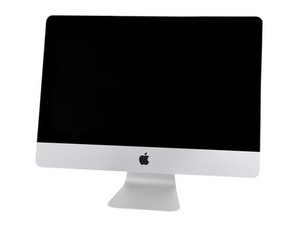I'm not sure its worth the effort for so little gain ...
- Yes, the i7 CPU is faster but by only a slight margin.
- Yes, it does offer hyper-threading Vs the i5 but most basic workstation apps are still single threaded.
- Yes, if you run multiple apps concurrently each can have its own thread pool, so you could run an Excel spreadsheet crunch while you're doing something else thats CPU intensive. But how often are you doing that??
- Yes, a gamer or someone working in video or music will find the i7 hyper-threading useful! But they are likely to have a bigger display (27" or larger external).
OK, so to your point, is your CPU chip soldered? As far as I know its not in your given model as you've already discovered the base model: Intel i5-4570R 2.7 GHz (Ramped 3.20 GHz) CPU is soldered down. So yes you could swap out the CPU.
Now the rub: This is a VERY big job! Not only do you need to remove the display without damaging it, you'll need to pull the logic board completely out of the system. If you've not serviced the newer 'Thin Series' systems you may want to think long and hard here before attempting!
Here is the IFIXIT guide you'll need to follow: iMac Intel 21.5" EMC 2638 Logic Board Replacement heed the warnings! and make sure you use the correct tools and follow the instructions to the letter as it doesn't take much to kill the display (trust me I know!)
As a Web designer your needs are more complex here as you more often need more CPU clocking Vs multiple threading. When you are compiling your code it's clocking that counts, when working with page layout you need threading. Review your tools on what they require! As my answer is based on what we use.
So what to do here?? I would take a different direction! Instead I would get a Mac Mini (no display or keyboard/mouse needed!) Here we'll set it up as a compiling server. So you move your build on to it to then let it compile on its own leaving your iMac free to continue doing other things. You'll use screen sharing to access it over your Ethernet network (screen sharing is built in to the OS) the mini will run headless and without the keyboard/mouse. Yes, you'll need them in the setup but not afterwards (use your iMac's for that).
While that can reduce your need for a more powerful iMac there are limits here ;-{ The links I posted in your question is the different chips your iMac can support. Sorry ;-{
Our web & presentation developers use Mac Pro's to gain the power they need which is a big leap here from a 21.5" iMac.


 35
35  329
329  971
971
2 Comments
EveryMac feature comparison: Late 2013 iMac models
* Intel i5-4570S 2.9 GHz (Ramped 3.60 GHz) Processor
* Intel i7-4770S 3.1 GHz (Ramped 3.90 GHz) Processor
Both are Quad core the 4770S offers hyper threading (8 Vs 4 concurrent threads)
by Dan
Portuguese: Olá, Você tentou 2 pentes de 16GB DDR3 cada pente para se tornar 32GB? Corsar tem e o Crucial também e na versão final de 2013 do CPU i5-4570S de 21,5" polegadas a 2,90GHz percebi que o CPU não está soldado Pensei no Core I7-4770s, funciona bem? Olhei aqui no site e percebi que a versão que tem I5 de 2,7 GHz foi unificada com o i5 de 2,9GHz em real tem diferenças
English: Hello, Have you tried 2 sticks of 16GB DDR3 each stick to become 32GB? Corsar has and the Crucial one too and in the late 2013 version of the 21.5" i5-4570S CPU at 2.90GHz I noticed that the CPU is not soldered I thought of the Core i7-4770s, does it work well? I looked here on the site and realized that the version that has 2.7GHz I5 was unified with the 2.9GHz i5 in real has differences
by Cláudio Back